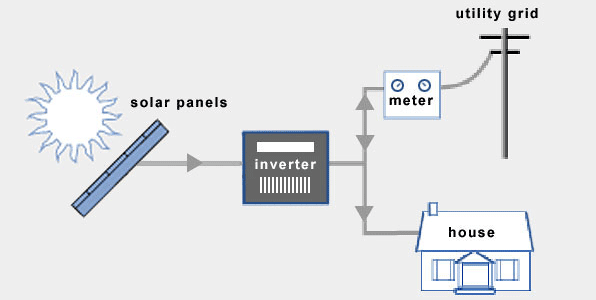Light-to-Electricity: What Happens Beyond the Solar Cell

The solar panel, made up of several solar cells , is the point of generation in a solar PV system. The electricity generated has to be conditioned and processed before use, and a number of other components are involved in this process. Image source: https://www.solarreviews.com/blog/grid-tied-off-grid-and-hybrid-solar-systems Solar panels and diodes A solar panel is made up of several cells connected together in series. Commonly used configurations are 60-cell and 72-cell panels. In turn, panels can be connected in various series and parallel configurations. A number of panels connected in series form a 'string'. A number of such strings can be connected in parallel. Connecting panels in series creates a higher output voltage, while connecting them in parallel provides a higher current output. A diode is a semiconductor device which allows flow of current in only one direction under normal circumstances. Diodes are used for two different functions in solar...
